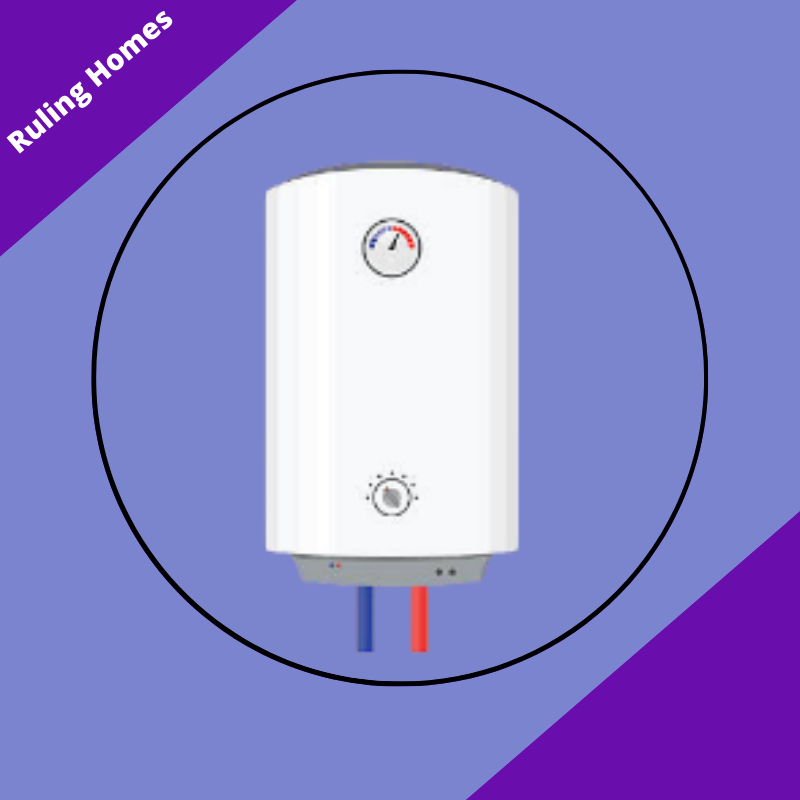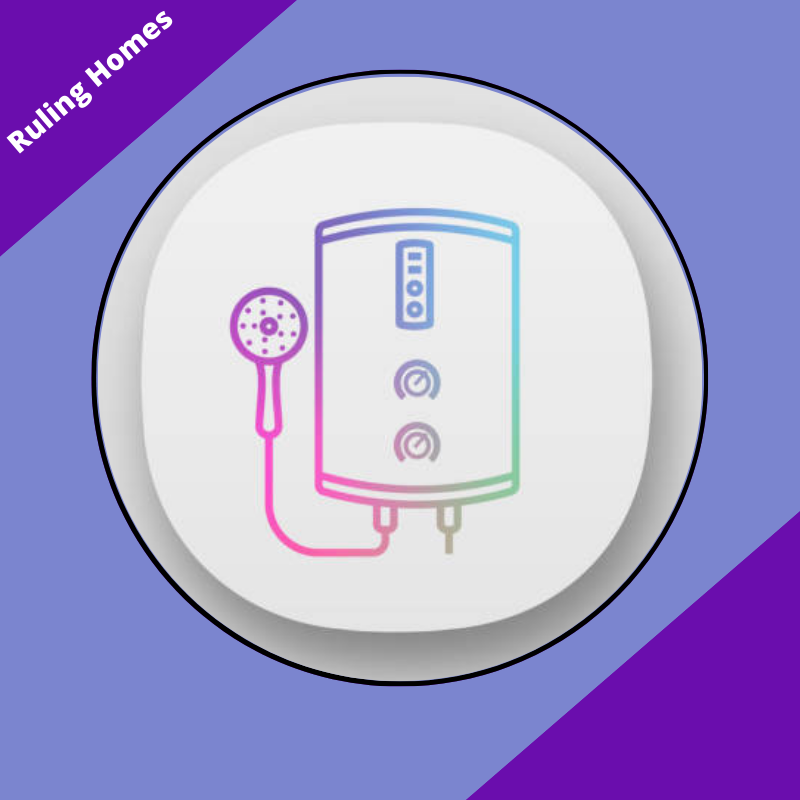A tankless water heater is a machine that heats the water instantly as it flows through its pipes. It does not store water internally or externally.
The common type of material used in a tankless water heater is stainless steel. It also comes in plastic and cast iron, which directly configures the price and longevity of the tankless water heater.
The latest tankless water heater is more efficient in terms of heating excessive water.
Stainless steel tankless water heater lasts longer than any other type as it is rust-free and durable. It costs more than other types because of its long-lasting properties. A Cast iron water heater is also a good option depending on how much hot water you need for your house.
The history of tankless water heater dates back to 1929 when the German man, Stiebel Eltron, invented the first electric tankless water heater. He manufactured the heater because of the increasing demand, as in Europe gas was not widely available.
Previously gas supported heaters were being used but, Dr. Stiebol reinvented the machine with a great amount of effort.
Table of Contents
What Is The Ideal Material For A Tankless Water Heater?
The ideal material for a tankless water heater is stainless steel. Stainless steel is preferred because of its rust-free and long-lasting properties.
Stainless steel tankless water heater costs more than any other type. The cheapest type of tankless water heater comes in plastic that doesn’t last long. The durability and longevity depend on the frequency of use of tankless water heater.
A tankless water heater that is used commercially or placed in a big house costs more as they have to heat more water back and forth.
People who are concerned about the environment may want to choose the tankless water heater that produces fewer carbon emissions. Nowadays, a tankless water heater produces less carbon emissions as compared to other traditional water heaters.
What Are The Different Types Of Tankless Water Heaters?
There are two primary types of tankless water heaters
Condensing tankless water heater: Condensing tankless water heaters can recycle the heat process using steam/vapors when no more gas is needed for heating water. A standard PVC pipe is used to retain the vapors.
Non-Condensing Tankless water heater: Non-condensing tankless water heaters are not able to recycle the heat process rather they evaporate the steam through a regular ventilation system. It is the basic form of tankless water heater that only uses an exchanger coil to heat water.
What Is The Ideal Size For A Tankless Water Heater?
The ideal size of the tankless water heater depends on how much water you need for taking bath and normal usage. It works differently for commercial and big houses as they need more hot water. You will need a stable electricity connection to heat more water.
What size of tankless water heater do I need? It depends on the usage of the tankless water heater. Normally, it comes without tanks. Tankless water heaters work differently for every house. Find more details about size of tankless water heater.
You need to count the number of households and estimate how much water you can use per day. The average size of a tankless water heater is 5 gallons per minute. It varies for commercial and big houses. They may need as much as 10 gallons of hot water per minute.
You might also want to consider the power of the tankless water heater. On average, the water heater uses 10kW to 40kW. With the bigger size, comes more usage of electricity/power. It uses electricity while preparing the hot water inside.
What Are The Use Cases Of A Tankless Water Heater?
Some of the use cases of tankless water heaters are given below.
- Quick hot water
- Helpful in the kitchen (washing dishes)
- Eco friendly
- Works best for areas without gas supply
- Digital controls
- Saves money
Once you have installed the tankless water heater, you will get to know more use cases of this machine.
Do Tankless Water Heater Increases Electricity Bill?
Yes, but that depends on the frequency of use. Excessive use will increase the electricity bill.
How Often Do You Need To Flush A Tankless Water Heater?
Over time, the tankless water heater will accumulate salts and minerals in its heating chambers. You need to flush the tankless water heater once a year.
Do Electric Tankless Water Heaters Need A Vent?
No, unlike gas tankless water heaters. Electric tankless water heaters do not need a vent.
Do Tankless Water Heaters Produce Carbon Monoxide?
A kit installed on the tankless water heater and boiler that converts them from natural gas to propane can cause the unit to produce carbon monoxide.
What Are The Best Tankless Water Heater Brands?
The best tankless water heaters are as follows.
Best overall tankless water heater: Eco Smart
Best cost-friendly tankless water heater: Rheem
Best eco-friendly tankless water heater: Rinnai
Best value tankless water heater: Stiebel Eltron
What is the life span of a tankless water heater?
The average life span of a tankless water heater is 8-10 years. It depends on the purchase decision. Also, by keeping up the maintenance and routine checkup, the average life span of the tankless water heater can be increased.
Other factors on which the life span of a tankless water heater depends:
- Initial purchase
- Usage
- Maintenance/ routine checkup
- Power supply
The average cost of a tankless water heater varies from $200-$999. The price depends upon the size of the water heater. If you need more gallons of water, it will cost more.
How Does Culture Affect The Usage Of A Tankless Water Heater?
Tankless water heaters took off in most houses after their invention. Before that, people used to get hot water from gas heaters. A tankless water heater removed the need for natural gas as they are operated by electricity.
It works best for the areas where natural gas is scarce. Tankless water heater proved to be a helpful machine in all regions across Europe as most of their areas don’t have a plentiful supply of natural gas.
The tankless water heater is used worldwide. As it supports electricity and provides enough amount of water for showers, washing dishes, etc., most people put this machine in their restrooms to get rid of gas and other connections for safety concerns.
What Are The Relevant Tools For A Tankless Water Heater?
Conventional storage-tank water heater: Conventional storage-tank water heater is similar to a tankless water heater as both are intended to provide hot water. But this special water heater has a tank to store the hot water.
Condensing water heater: Condensing water heater is similar to a tankless water heater as both are used to provide hot water. Condensing water heater uses traditional gas to give hot fumes to boilers.
Solar-powered water heater: Solar powered water heater is similar to a tankless water heater. Both provide hot water. Unlike others, this water heater is energy efficient and depends on bright sunlight for solar-powered heating.
What Are The Features Of A Superior Tankless Water Heater?
Here are the superior features of a tankless water heater.
Digital panel: Digital panel enables the easy operation of this machine.
Quality: A good quality tankless water heater provides smooth functioning and long-lasting capabilities.
Digital app: Digital app controls the temperature and water flow through the smartphone, as far as you have a good Wi-Fi connection.
Hot water sensor: It senses the temperature of the water and stops heating the coil.
Style: As many styles are available in the market, you should choose the one that fits you best.
What Are The Parts Of A Tankless Water Heater?
Parts of tankless water heater include:
Heat exchanger: Heat exchanger allows the tankless water heater to get a good amount of heat.
Valve: When the pipes are filled with water, the valve provides a space for air to release. It increases the smooth flow of hot water.
Burner fan: It provides the smooth ventilation of excessive heat accumulated in the tankless water heater.
Flow Sensor: It works in parallel with the water demand. Provides flow of both hot and cold water according to the need.
Steel Body: A good outer covering provides long life and increased efficiency.
How Did The Tankless Water Heater Get Its Name?
It is not explained where the name tankless water heater came from. But we do know that it is a water heater without a tank. Standard water heaters were present already, but being new in technology, tankless water heaters allowed humans to get rid of using natural resources like gas.
It then became famous among those areas where gas was the main resource for getting hot water. It is called by different names in different countries. It is also called a hot water tank, geyser, and water heater in some parts of Asia and the UK.
What Is The History Of A Tankless Water Heater?
The history of water heater dates back to 1869 when an English painter named Benjamin Waddy Maughan invented the first domestic water heater that used gas to heat the cold water present in the pipes. It was considered dangerous because the hot gases accumulated in the bathroom left no space for the gases to ventilate.
Later, a Norwegian mechanical engineer Edwin Ruud invented the storage tank type water heater that was later moved to Pennsylvania US for more drastic changes. It was the updated version as it provides storage for hot water.
In 1929, a German man Stiebel Eltron invented the first tankless water heater. It was such an invention that left everyone surprised. People never thought of a tankless water heater.
This water heater uses a hot copper/metal rod to continuously heat the water to the desired temperature. Cold water flows from one end and hot water pours out from another.
When people got to know more about tankless water heaters, it increased the manufacturing process. Tankless water heaters were manufactured in enormous numbers. Today we see the most updated tankless water heaters.

I grew up on a small farm in New Jersey. We had a big family because my parents, my uncles and aunties all were living together on this farm so, you can imagine, it was always over crowded with people. But living in farm was really great because we had to do everything on our own and I learned so many things from my parents and uncles and aunties and that is where I found my passion for fixing things, whether it is renovating or designing, I was always there. Read more


